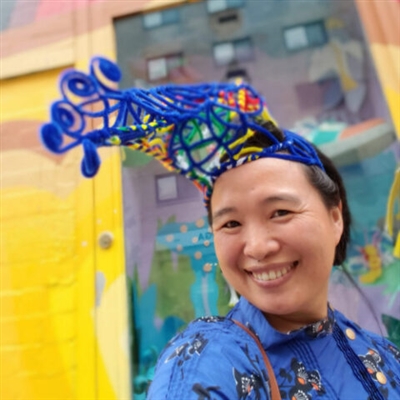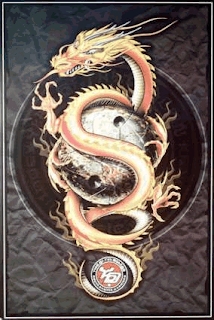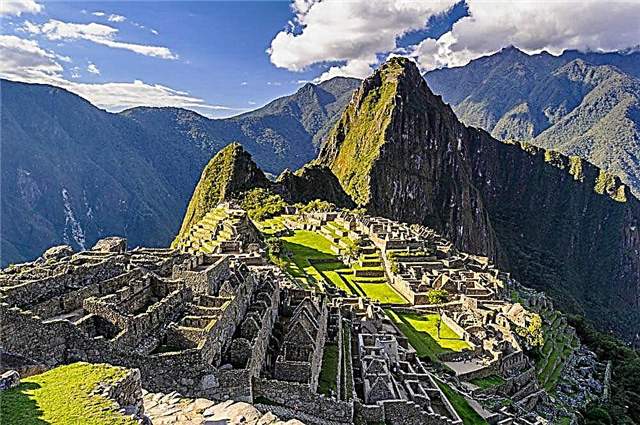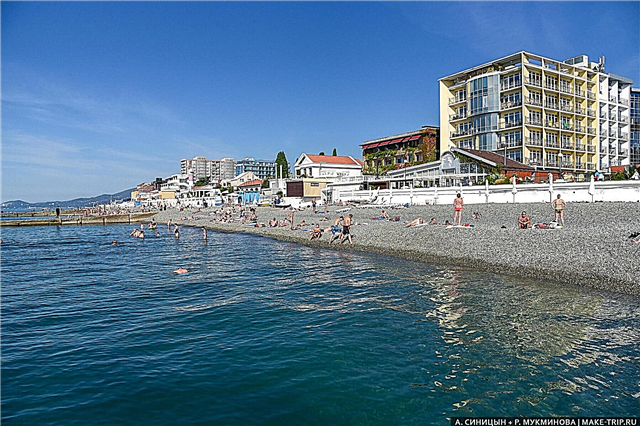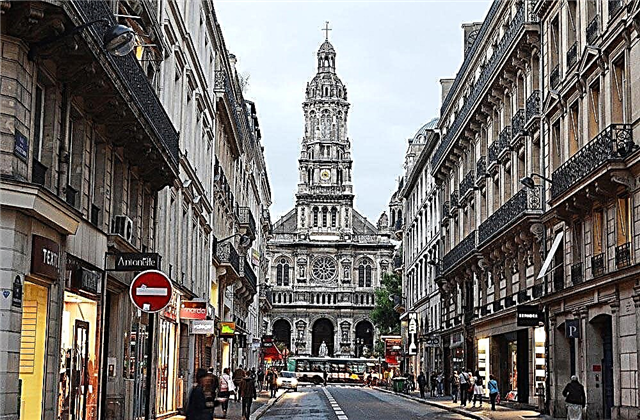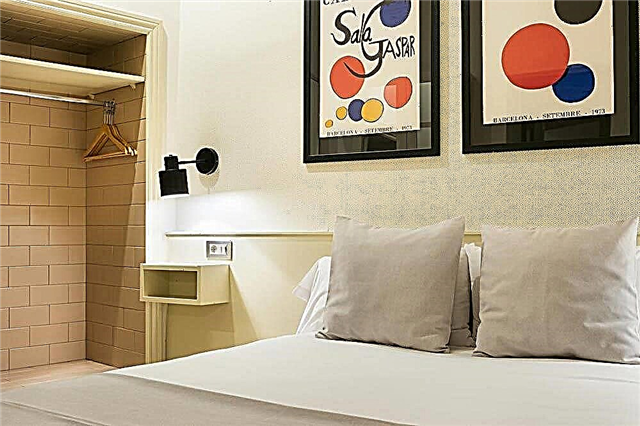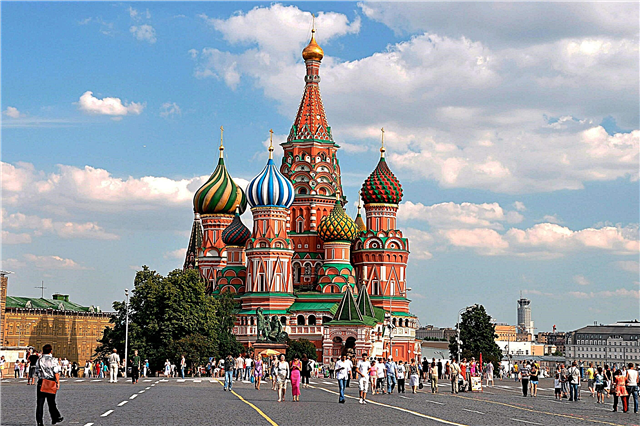It is not for nothing that the capital of Russia has received the nickname “Golden-domed Moscow”. Some of them still remember the times of Ivan the Terrible. Some churches have become the hallmark of the capital - it is difficult to find a person who would not have heard of St. Basil's Cathedral or the Kazan Cathedral of the Moscow Kremlin.
There are also young churches in Moscow that have been built in recent years. One of the most famous is the Cathedral of Christ the Savior, built on the site of a temple that was blown up in Soviet times. And some of the new temples are entire complexes, like the Temple of Seraphim of Sarov in Raev.
Operating churches and cathedrals in Moscow
List of the most famous and popular temples in the city.
St Basil's Church
The official name of the temple is the Cathedral of the Intercession on the Moat. But everyone knows him under the name of the Cathedral of St. Basil the Blessed - his temple was received in honor of the Moscow miracle worker, who was recognized as a saint. Because of the beauty of its architecture and interior decoration, the temple has become the hallmark of Moscow. Paintings of the 16th-18th centuries have been preserved inside. This is not one temple, but 8 churches connected by passages into a single composition.
Address: Moscow, Red Square, 7
Site: shm.ru

Cathedral of Christ the Savior
This is one of the youngest churches in Moscow, built on the site of a previously blown up cathedral. Now it is a cathedral where divine services are regularly held by the patriarch. There are many shrines of the Orthodox Church in the temple. The rich decoration makes an impression on every visitor. The Museum of Church Art was founded at the cathedral, where unique works are kept.
Address: Moscow, st. Volkhonka, 15
Website: new.xxc.ru

Kazan Cathedral
This temple on Red Square immediately attracts attention. The color scheme (white, red and gold) was not chosen by chance - each of these colors has its own meaning in church art. The cathedral is richly decorated with wall paintings and other decorative elements. The Kazan icon of the Mother of God, which is recognized as miraculous among believers, and other church relics are kept inside.
Address: Nikolskaya, 3
Site: kazanski-sobor.ru

Assumption Cathedral
The cathedral is a unique architectural monument of the 15th century. The frescoes of the temple have been preserved from the 15th-16th centuries, and thanks to the work of restorers, they acquired their original appearance. The collection of icons, the oldest of which date back to the 11th century, is one of the richest in the world. The southern doors of the temple have preserved over 20 ancient frescoes on biblical themes. Since the time of Ivan the Terrible, coronations of Russian tsars have taken place in the church, except for Peter I and Catherine I.
Address: Manezhnaya, 2-10, building 2
Website: www.kreml.ru

Blagoveshchensky cathedral
The temple was built under Ivan the Terrible. His famous paintings on the walls and ceilings were made by famous masters of that time - Andrei Rublev, Theophanes the Greek and others. Despite the reconstruction of the cathedral, the painting was renewed every time exactly according to the old model. According to legend, the stone temple floor interspersed with jasper and agate was brought from Byzantium. The iconostasis of the altar part exceeds 2 meters in height and consists of 5 tiers.
Address: Moscow, Cathedral Square of the Moscow Kremlin

Cathedral of the Archangel
It is believed that this temple was built in the 1st half of the 12th century in one year. It is known as the burial vault of Russian tsars - from Ivan Kalita to Peter II. In the altar part there is the tombstone of Ivan the Terrible and his sons. The slabs are made of white marble. On the walls there are 17th century frescoes depicting more than 60 historical persons - Moscow and appanage princes, Russian tsars buried here at the end of the 16th-17th centuries and Kiev princes.
Address: Moscow, Cathedral Square of the Moscow Kremlin

Church of John Climacus
This church became famous for its bell tower, which bears the nickname "Ivan the Great". It is a 81-meter high building, unique in terms of strength, created under Ivan IV. On the upper tier there are 3 bells, each with its own nickname. The largest of them is Uspensky. It weighs 65320 kg. Now in the building of the bell tower is the Museum of the History of the Moscow Kremlin.
Address: Moscow, Donskaya square, 1, p. 17

Church of the Deposition of the Robe
The church was built as a house church for the Moscow metropolitans. The interior painting is done in warm colors. Unique frescoes depict the figures of the saints - the patrons of the Romanov dynasty. The lower tiers of the walls are decorated with ornaments. The iconostasis was created in the 16th century and many icons have only recently been "discovered" due to later layers. The temple houses an exhibition of Russian wooden sculpture of the 15th-19th centuries.
Address: Donskaya, 20
Address: www.riza1625.ru

Church of St. Nicholas the Wonderworker on Bersenevka
The temple was built in the 17th century as a house church for the courtyard of the royal gardener Averky Kirillov. It is included in the list of architectural monuments of federal significance. The church features intricate décor in vibrant colors. The largest dome of the temple weighs more than 3 tons - it was cast by the same master as the famous Tsar Bell.
Address: Moscow, Bersenevskaya embankment, 18-22
Website: bersenevka.info

Church of the Nativity of the Blessed Virgin Mary in Putinki
This church was built in the 17th century and became the last of the tent-roofed temples in Moscow. After her, temples of this type were no longer built, they were replaced by domed ones. The walls are made of special molded bricks. The external finish is rich in decor - multi-tiered kokoshniks, figured posts and cornices. Remains of 17th century frescoes have been preserved inside.
Address: Malaya Dmitrovka, 2, bldg. 2
Website: vk.com/vputinkah

Epiphany Cathedral in Yelokhovo
The temple is known to many as the place where Alexander Pushkin was baptized in 1799. The architecture of the cathedral immediately attracts attention. This is a baroque complex. Inside, thanks to the large windows and the light coming from the domed rotunda, the effect of expanding the space is created. The main iconostasis of the cathedral contains 65 images of saints - this is one of the largest collections of icons in Russian churches.
Address: Spartakovskaya, 15
Site: elohov.ru

Temple of the Icon of the Mother of God "Joy of All Who Sorrow"
The church was built in the 17th century, and later it was completed more than once. In its modern form, it was created in the 19th century, in the Empire style. The official name of the temple is the Church of the Transfiguration of the Savior, but it got its name because the miraculous icon of the Mother of God was kept in it. According to legend, she helped to heal the sick sister of Patriarch Joachim.
Address: Bolshaya Ordynka, 20
Website: ordynka.com

Church of the Intercession of the Blessed Virgin Mary in Yasenevo
The temple was built in 2015, and consists of the upper Church of the Intercession and the lower church in the name of the Archangel Michael. The architecture refers to ancient Russian traditions. Inside the upper church, there is a 2500 m² mosaic panel. The central figure covers an area of 45 m² - it is Christ blessing the faithful. The sample is taken from ancient Byzantine mosaics.
Address: Aivazovsky, possession 7/8
Website: www.hrampokrov.ru

Church of Peter and Paul in Yasenevo
This temple was built in the 1750s. It was rebuilt and reconstructed several times. Now it consists of 3 parts - the vestibule, the temple itself and the bell tower. The old paintings and decorations of the 18th century were lost during the Soviet period. Now they are being recreated. The temple is known as the wedding place of the parents of the famous writer Leo Tolstoy - NI Tolstoy and M. Volkonskaya.
Address: Moscow, Novoyasenevsky prospect, 42, bldg. 7
Site: optina-msk.ru

Krutitskoe Patriarchal Compound
The Patriarchal courtyard was built in the 13th century and was originally a monastery. The central building in the courtyard complex is the Assumption Cathedral. It is called "small Uspensky" to distinguish it from the cathedral in the Kremlin. Nearby is the Krutitsky teremok - two-story gates lined with thousands of tiled tiles. On the territory of the courtyard there is another church - the Resurrection, built in the 16th century.
Address: Krutitskaya, 8
Website: krutitsy.moscow

Church of the Ascension in Kolomenskoye
This is one of the first stone hipped-roof temples in Moscow Russia, built in 1532. It is ranked among the masterpieces of world architecture.According to legend, the temple was built by order of Vasily III in honor of the baptism of the long-awaited heir - the future Tsar Ivan the Terrible. The architect was the Italian Pyotr Frantsizsk Anibale (Pyotr Fryazin). Now in the basement of the church there is an exhibition “Secrets of the Church of the Ascension”.
Address: Moscow, Andropova Avenue, 39, p. 1

Church of St. Igor of Chernigov
The church was built in 2010-2012 by the architect A. Shipkov. The architecture and interior decoration preserve ancient Russian traditions. Five of the nine church domes are made of porcelain. The iconostasis is also made of ceramics, decorated in white and gold colors. Above the entrance there are medallions depicting Saints George the Victorious, Andrey Bogolyubsky and Mikhail of Tversky.
Address: Moscow, 7th st. Lazienki, 42, bldg. 9
Website: peredelkino.online

Church of Simeon the Stylite on Povarskaya
The temple dates back to the end of the 17th century. It consists of a central church - Vvedensky, and two chapels - in the name of St. Simeon the Stylite, and St. Demetrius of Rostov. In the 18th-19th centuries, the temple was popular among the Moscow nobility as a wedding place - the writer S.T.Aksakov, Bulgakov's future wife E. Nurenberg (the prototype of Margarita) with her first spouse and others were married here.
Address: Povarskaya, 5, building 1
Website: www.st-simeon.ru

Church of the Resurrection of Christ in Sokolniki
The church was built in 1909-1913. Many legends are associated with the construction of the temple - about the appearance of the Mother of God, who ordered the construction to begin; about the miraculously found money for the construction. The building was built in the Art Nouveau style of the beginning of the last century. The iconostasis is made of bog oak. In the vault are embedded "voices", which enhance the sound of the choir. The spatial orientation of the church is unique - not to the east, but to the south, towards Jerusalem.
Address: Moscow, Sokolnicheskaya square, 6
Website: xbxc.ru

Church of the Life-Giving Trinity in Ostankino
The temple is located on the territory of the Ostankino estate museum, and is classified as a cultural monument of federal significance. Its external facade is unique, completely covered with decor - tents, kokoshniks, cornices, medallions with images of saints. The porch is decorated with marble and tiled tiles. Old paintings have been preserved inside.
Address: Moscow, street 1st Ostankinskaya, 7, building 2
Site: trinitychurch.ru

Church of the Intercession of the Most Holy Theotokos in Fili
The church was erected in 1690-1693 by order of LK Naryshkin - uncle of Peter I. Art critics attribute it to the "Naryshkin Baroque" style. The external decoration is white stone, with the use of carving. The interior is decorated with wood carvings. Colored stained-glass windows of the temple, according to legend, were brought by Peter I from Narva, after the capture of the city.
Address: Novozavodskaya, 6
Website: www.pokrov-fili.ru

Church of All Saints in All Saints
The construction of the temple is associated with the name of the Imeretian (Georgian) princess Daria. In 1730-1733 the church was built. Before Georgia became part of the Russian Empire, divine services were conducted in the Georgian language. In architectural terms, the temple belongs to the early Baroque. The bell tower was nicknamed the "Leaning Tower of Pisa" due to its slight slope. It arose due to groundwater and the proximity of the metro.
Address: Moscow, Leningradskiy prospect, 73 A
Site: hramsokol.ru

Temple of the Holy Martyr Clement, Pope
This is an Orthodox church, marked on the "Godunov drawing" in 1597. Then the temple was made of wood, and in the 18th-19th centuries it was rebuilt into a stone one. The building belongs to the Baroque style. The iconostasis was created by the masters of the Imperial Academy of Arts. The altar contained many relics, including the Gospel of 1654. The carved canopy over the altar of the temple is a unique piece of decorative and applied art, now it is kept in the Museum of Architecture named after Shchusev.
Address: Pyatnitskaya, 26, p. 1
Website: www.klement.ru

Church of St. George the Victorious on Poklonnaya Hill
The temple was built for the 50th anniversary of the Victory, in 1995. It belongs to the neo-Russian style with modern elements. The iconostasis of the temple consists of three tiers, with 48 images, including the Orthodox new martyrs of the XX century. The outside facade is decorated with bronze bas-reliefs by authors Z. Tsereteli and Z. Andzhaparidze. Above the entrance there is a panel "Deesis" by E. Klyucharev.
Address: Moscow, Victory Square, 3 B
Site: altaryvic.ru

Trinity Church in Nikitniki
The church is considered the standard of the "Moscow pattern" - the architectural style of the mid-17th century. The building is rich in decorative elements - kokoshniks, arches, tiles. Inside, there is a painting of 1652, which was made by the best masters of the Kremlin Armory Chamber - Simon Ushakov and Joseph Vladimirov. In the lower temple there is a water bowl made of solid stone brought from Palestine.
Address: Moscow, Nikitnikov lane, 3
Website: www.nikitniki.ru

Temple of St. Gregory of Neocaesarea
This is an architectural monument of federal significance. The temple was erected in the 17th century, the parents of Peter I, Tsar Alexei Mikhailovich and Natalya Naryshkina, were married in it. The main feature of the decoration is a frieze of 9 thousand tiled tiles, presumably made by Belarusian craftsmen. The icons were painted by Simon Ushakov and other masters of the Armory Chamber. The people called the church "Red" - that is, beautiful.
Address: Bolshaya Polyanka, 29 A
Website: www.ieronim-polyanka.ru

Church of the Intercession of the Blessed Virgin Mary in Izmailovo
The temple was erected for the royal estate in the village of Izmailovo during the reign of Tsar Alexei Mikhailovich. Refers to the Naryshkin Baroque style. Outside it is decorated with colored tiles - floral ornament and "peacock's eye". For the interior painting, artists from Kostroma were invited. Now from the grandiose five-tiered iconostasis, only a few icons remain.
Address: Moscow, Silver Island, 1, building 1
Site: hrampokrova.ru

Church of Martyr Tryphon in Naprudny
This is one of the most ancient churches in Moscow - it dates back to the 15th century. According to legend, the church was built by order of the falconer Tryphon, who, while hunting, missed the beloved falcon of Tsar Ivan the Terrible. After the prayer of St. Tryphon, the falcon was found. After that, a temple was erected in memory of the miraculous help of the saint. Temple fresco depicting St. Tryphon and the Falcon is now in the Tretyakov Gallery.
Address: Trifonovskaya, 38, p. 1
Site: triphon.ru

Temple of St. Sergius of Radonezh
The first mention of the temple dates back to 1722. In terms of the richness of the interior decoration, the temple was on a par with the cathedrals of the Kremlin. It contained many ancient icons, of which the icon of the Mother of God "Satisfy my sorrows" was especially revered. Most of the church decoration has been lost, but the main icon has been preserved. Now the temple is included in the list of cultural values of federal importance.
Address: Nikoloyamskaya, 59
Website: www.sergeyradoneg.com

Temple of Seraphim of Sarov in Raev
The temple is a complex, on the territory of which there is a chapel in the name of Nicholas the Wonderworker and the baptismal Vvedensky temple. A Sunday school and a spiritual and educational center are located nearby. The temple was built on the model of ancient Russian churches and was consecrated in 2017. The height of the temple is 43 meters, the area is more than 1000 m².
Address: Moscow, Shokalskogo Ave., 48
Site: raevo.ru

Church of the Life-Giving Trinity in Leaves
The church was built in the middle of the 17th century by the archers of the Pushechnikov regiment. According to legend, the Tsar's Doors were taken out by Tsar Alexei Mikhailovich from the captured Orsha, and presented to the temple. A significant part of the decoration of the church was brought from there. The architecture of the temple is interesting - it is made in the traditions of the time of Ivan the Terrible, which is unusual for the 17th century.
Address: Sretenka, house 27/29, building 3
Website: www.hram-troicy.ru

Church of the Life-Giving Trinity on Sparrow Hills
This is an architectural monument of federal significance and one of the oldest churches in Moscow - it was first mentioned in 1453. The modern stone church was built at the beginning of the 19th century in the Empire style. The mosaic frescoes on the facades have been recreated according to old models. In 1812, it was in this church that M. Kutuzov prayed before the historical council in Fili, which determined the victory in the war with Napoleon.
Address: Kosygina, 30, building 1
Website: hram-troicy.prihod.ru

Church of Pimen the Great
The temple was built at the end of the 17th century to replace the burnt wooden one.Later, a chapel in the name of the Vladimir Icon of the Mother of God was attached to it. There is a legend that a blind boy was playing in the courtyard of the temple, who suddenly regained his sight, and the first thing he saw was this very icon carved from stone. The stone icon was then kept in the church. The temple was mentioned by Marina Tsvetaeva in her autobiographical stories ("The House at Old Pimen" and others).
Address: Moscow, Novovorotnikovskiy perulok, 3, building 1
Website: stpimen.com

Church of St. Nicholas the Wonderworker in Klenniki
The church is mentioned in 1657 as the temple of "St. Nicholas the Wonderworker, which is on Pokrovka, near the grate." Gradually, new side-altars were added to it. In 1910, the priest here was Alexei Mechev, currently canonized as Alexy of Moscow. The church was attended by the philosopher N. Berdyaev, the artist L. Bruni and other famous people. The original decoration of the temple has not survived.
Address: Maroseyka, 5
Website: www.klenniki.ru

Temple of the Great Martyr Catherine on Vspolye
The temple was created in the 17th century. Later it was reconstructed by order of Catherine the Great and acquired a late baroque look. The decoration of the church were icons painted by D. Levitsky and V. Vasilevsky, and the silver Royal Doors (now lost). Currently, the church belongs to the Moscow courtyard of the Orthodox Church in America.
Address: Bolshaya Ordynka, 60/2
Website: ocapodvorie.org



